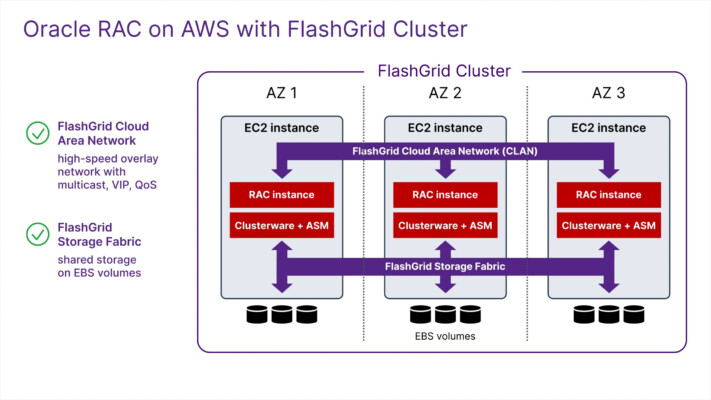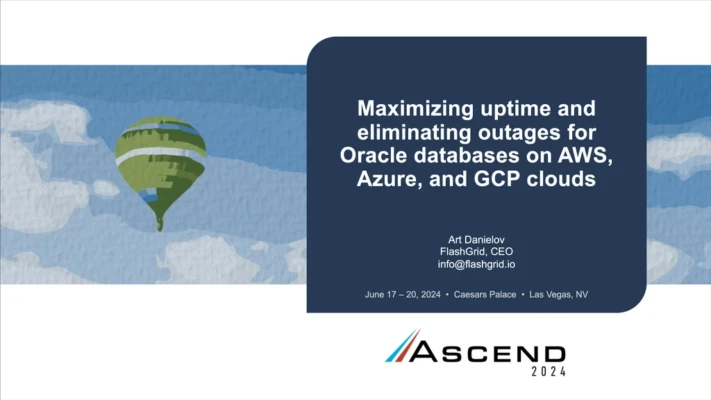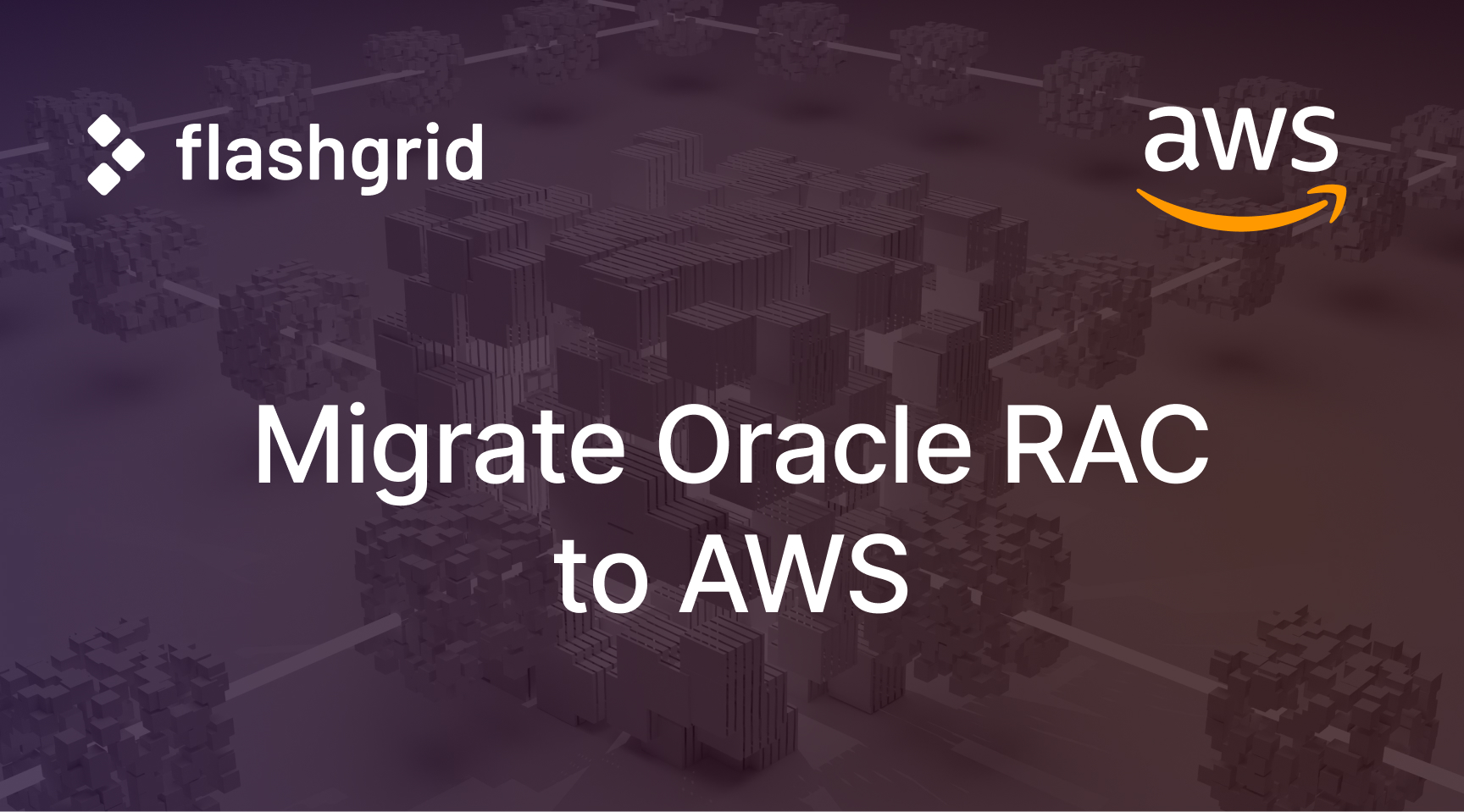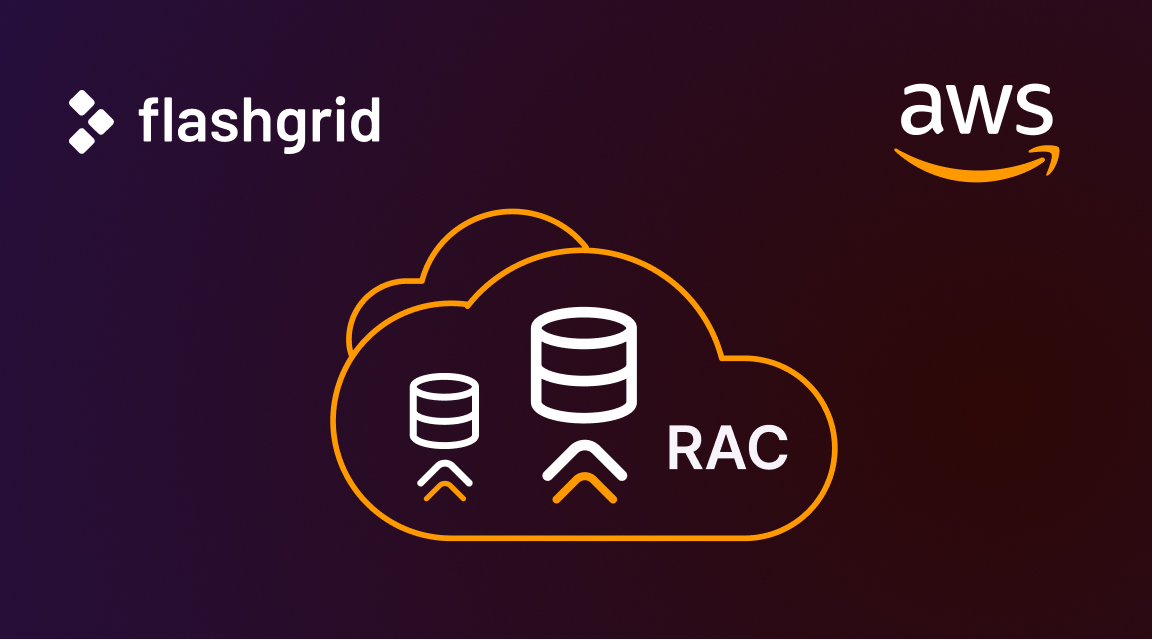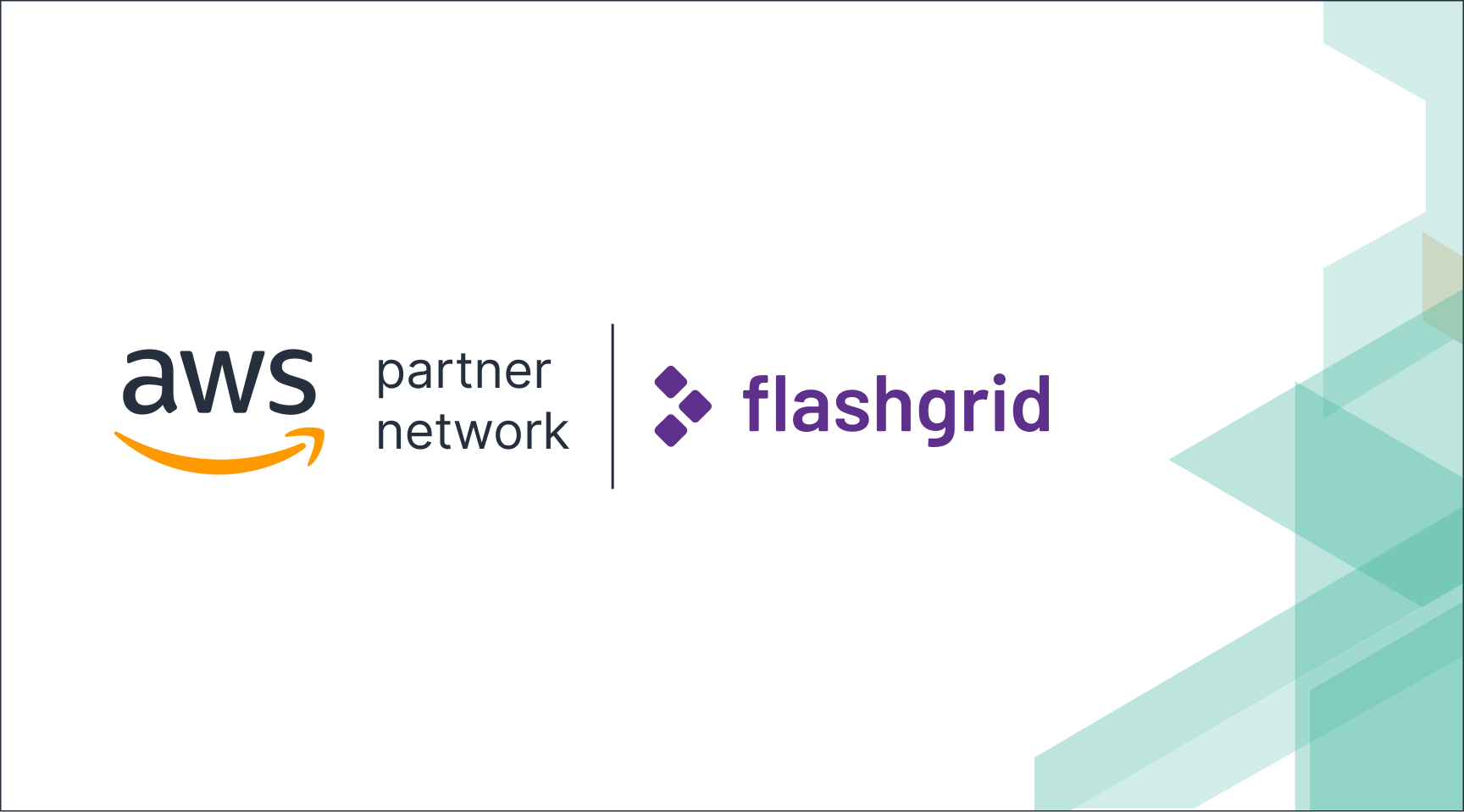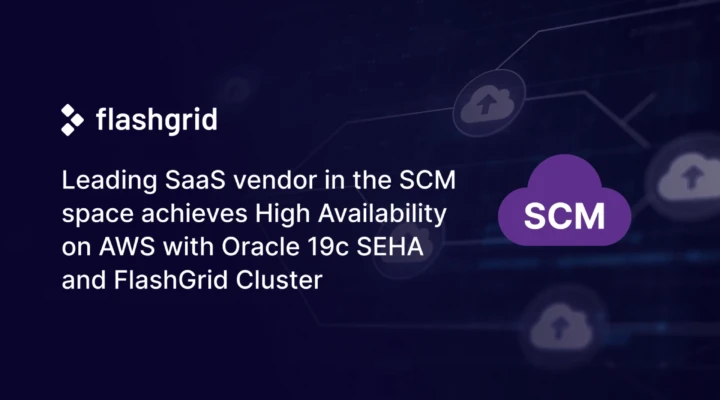FlashGrid simplifies DB management in the cloud
Making all these changes together posed a unique challenge. The Oracle DBA team was used to having full control of everything from disk to network. They needed to be able to perform tasks such as installing third-party drivers and connectors to ship data to the SQL server and perform extract, transform, and load (ETL) jobs to Snowflake.
To ensure a reasonable learning curve for his team, the lead DBA needed a solution that would simplify database management in the cloud and provide the flexibility needed to work in heterogeneous database environments and respond to changing requirements. He would try to reduce the need to retrain and its expense as much as possible.
The SaaS provider’s AWS representative suggested speaking with FlashGrid. The lead DBA quickly realized that with FlashGrid Cluster on AWS, his team would keep full control and use familiar Oracle tools such as ASM and Clusterware. He perceived FlashGrid Cluster as a layer underneath their existing stack that makes it easier to use. Unlike DBaaS, FlashGrid allowed them to use all the Oracle features and keep the level of control necessary to do their jobs without imposing restrictions on the functionality and interoperability of the database system.





